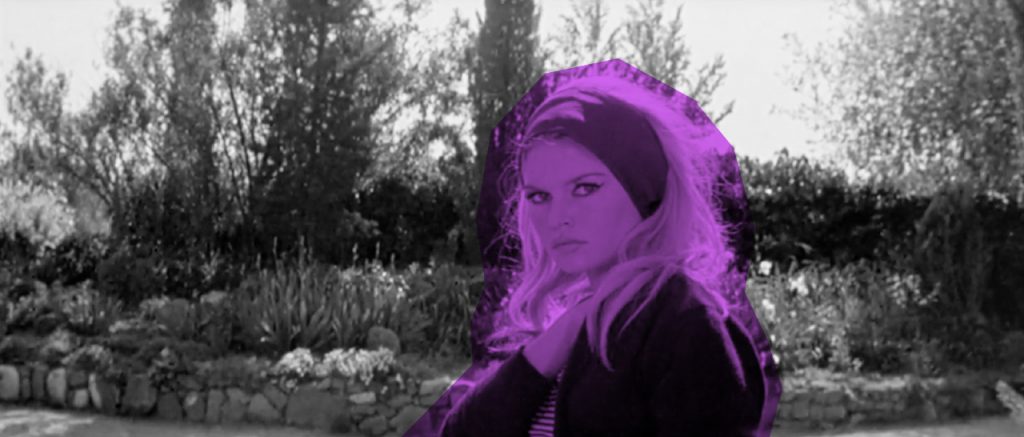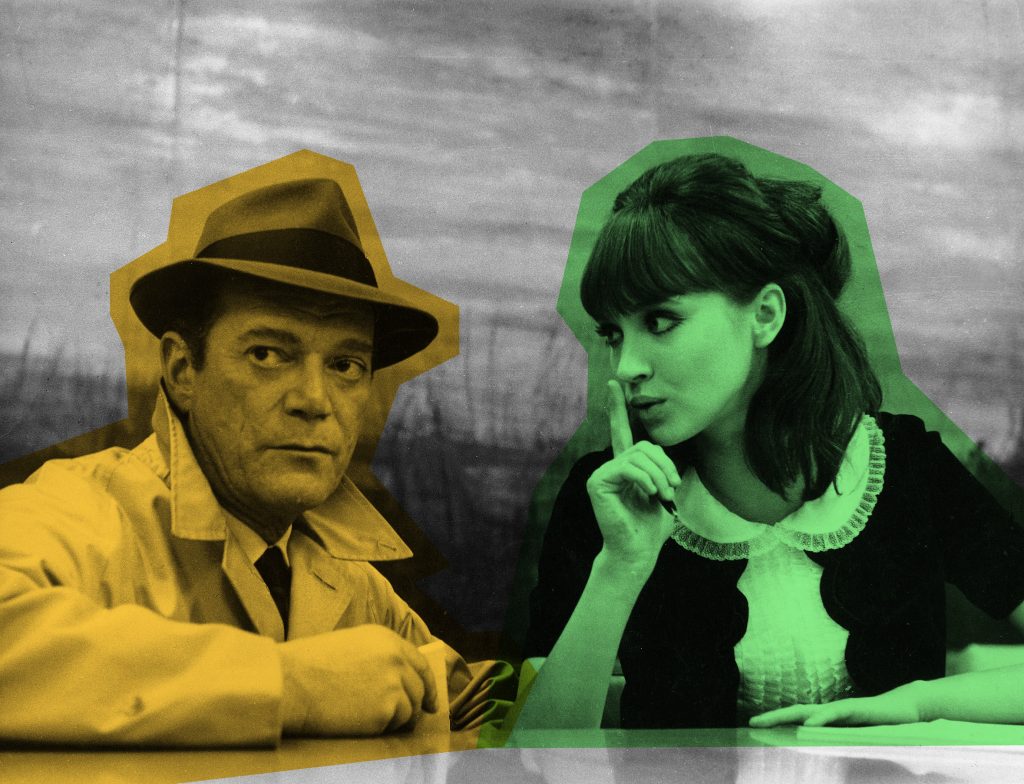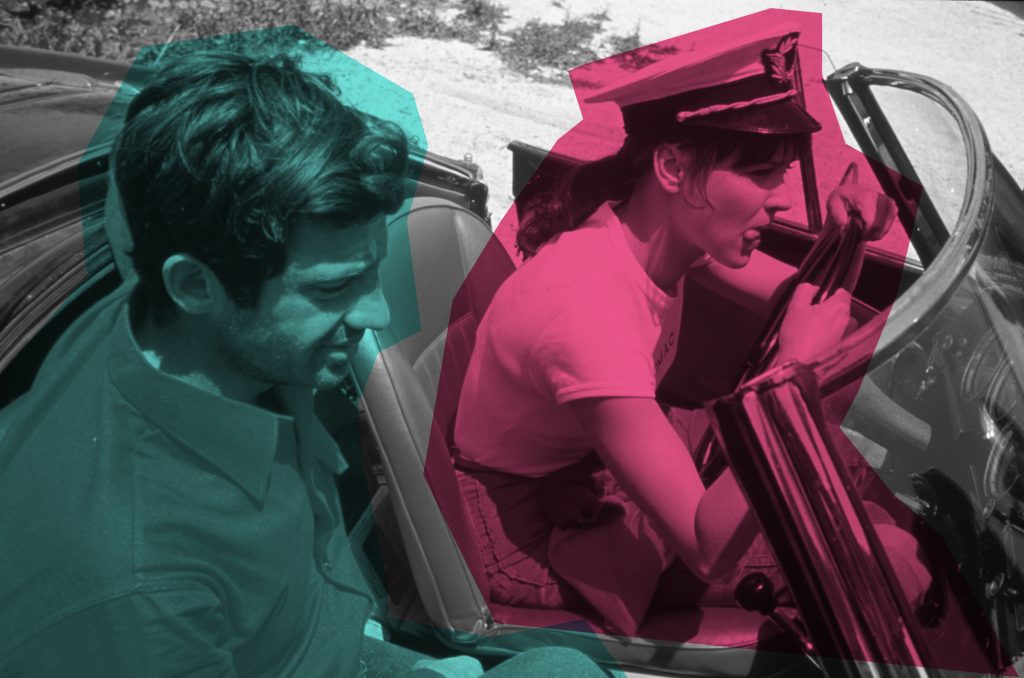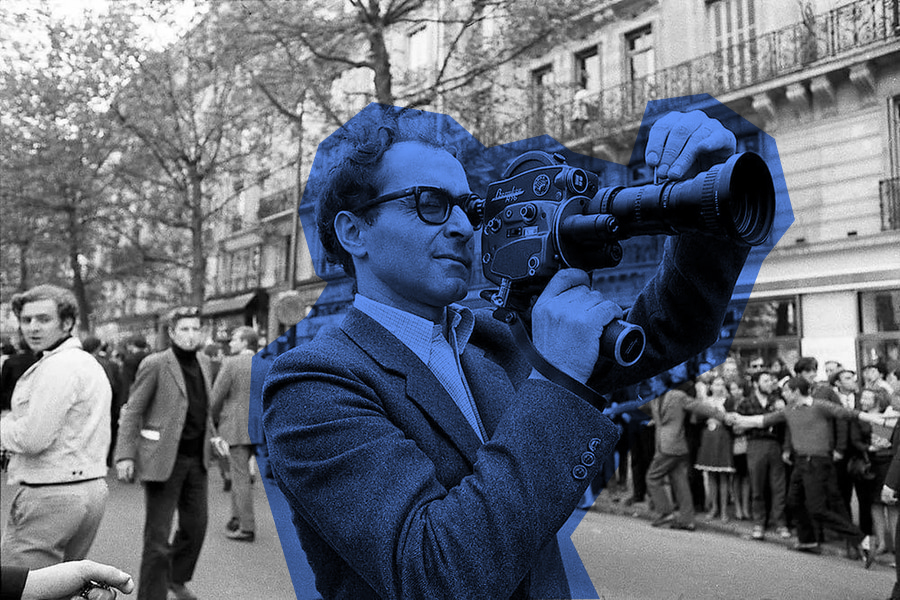Director Jean Luc-Godard, key figure of the French New Wave, has died today at age 91. According to an unnamed family source, he chose an assisted death in Switzerland, and wished for his decision to be made public.
Godard made over 50 films between 1955 and 2018, and received 51 awards, including a special Palme d’Or at Cannes in 2018.
His work has left a very important mark in the history of cinema, so let’s rewind all the way back to the 1950s and take a look at seven of Godard’s must-see films.

- BREATHLESS (À bout de souffle, 1960)
Breathless was Godard’s first feature, and one of his most popular films to date.
Starring Jean-Paul Belmondo as a small-time gangster and Jean Seberg as his girlfriend, the movie was inspired by American B-film noirs.
The story is loosely based on an actual newspaper article about a thug who stole a car in order to visit his mother and ended up killing a policeman.
Godard shot Breathless to appear as a documentary, with hand-held cameras and almost no lighting. The idea was to make the film look like a newsreel.
The movie is also notable for its use of jump-cuts, which were considered very amateurish at the time. A jump-cut means that a single shot is broken with a cut that makes the subject “jump” forward in time.

2. THE LITTLE SOLDIER (Le petit soldat, 1960)
Godard’s second film, based on Arthur Koestler’s novel Darkness at Noon, dealt with the Algerian War of Independence and suggested that France engaged in torture. This resulted in the French Government banning The Little Soldier for three years.
The movie marked his first collaboration with actress Anna Karina, who would go on to become an icon of the French New Wave and Godard’s wife.
Anna Karina was a 19-year old model at the time, and had no acting experience, but it was her awkward manner that apparently won Godard over.
The couple would divorce in 1965, after a very complicated relationship and abusive behavior by Godard.

3. MY LIFE TO LIVE (Vivre sa vie, 1962)
Conceived as a vehicle for Karina’s talent, the film marks a departure from Godard’s previous style. Shots were more static, locations were lit conventionally, and sound was captured on location rather than overdubbed later.
Godard was inspired by Bertolt Brecht’s The Threepenny Opera and divided the movie into twelve chapters or tableaux. It tells the story of a woman who turns to prostitution in order to make ends meet.
The film was booed at the Venice Film Festival, where it premiered, but was later awarded the Critics’ Prize and the Special Jury Prize.

4. CONTEMPT (Le mépris, 1963)
Brigitte Bardot, then France’s biggest star, was offered a role in Contempt, Godard’s biggest project to date, with a budget of $1 million.
The film tells the story of a screenwriter who is commissioned to rewrite the script for an adaptation of The Odyssey while navigating a failing marriage.
The movie was a success, but the shoot itself was plagued by difficulties. For starters, the relationship between Godard and his leading lady was not the best, and the producers were dissatisfied with the film’s first cut – on account of Bardot not being naked much.

5. BAND OF OUTSIDERS (Bande à part, 1964)
In Band of Outsiders, two small-time thieves plan a heist and fall in love with Anna Karina, all while fantasizing about movies and playing in a sad, gritty-looking Paris.
Another gangster movie by Godard, it was very successful and has become quite iconic of the French New Wave, with scenes such as an impromptu dance in a café and a run through the Louvre.

6. ALPHAVILLE (Alphaville, une étrange aventure de Lemmy Caution, 1965)
“A science-fiction film without special effects”, Alphaville tells the story of a detective sent to a city where love has been outlawed in order to investigate the disappearance of another agent.
The film acts as a parable about the struggle between love and logic, and subverts the conventions of film noir.
Alphaville’s biggest inspiration was Jean Cocteau’s Orpheus, and parallels can be established in the main characters’ search for another person, in the poems and the questions they hear and listen to, in their final triumph over their enemy, or in the warning not to look back at the end of the story.

7. PIERROT LE FOU (1965)
Godard considered Pierrot le Fou to be a new beginning, but it feels more like the culmination of all of this previous work up to that time, and a commentary on his failed marriage to Anna Karina.
Ferdinand (played by Belmondo) decides to leave his wife and run off with his ex-girlfriend, Marianne (Karina), only to find himself embroiled in a murder and on the run from Algerian gangsters.
Godard shot the movie with a very experimental approach, often fully improvising and playing with his means. Pop-art inspiration is latent throughout the film, which was shot in very bright colors, giving it an aesthetic, much appreciated to this day.
All images belong to their respective owners.

